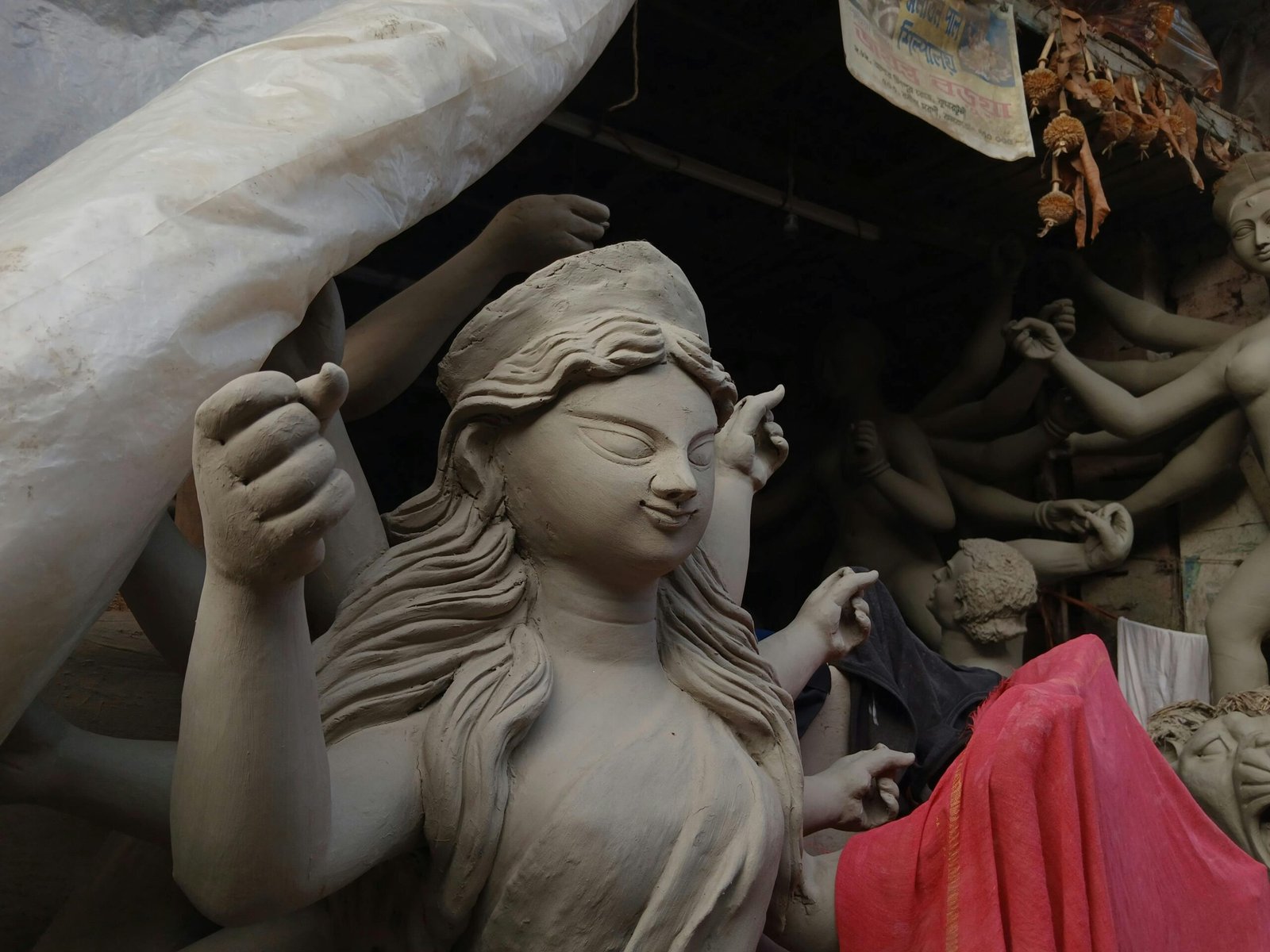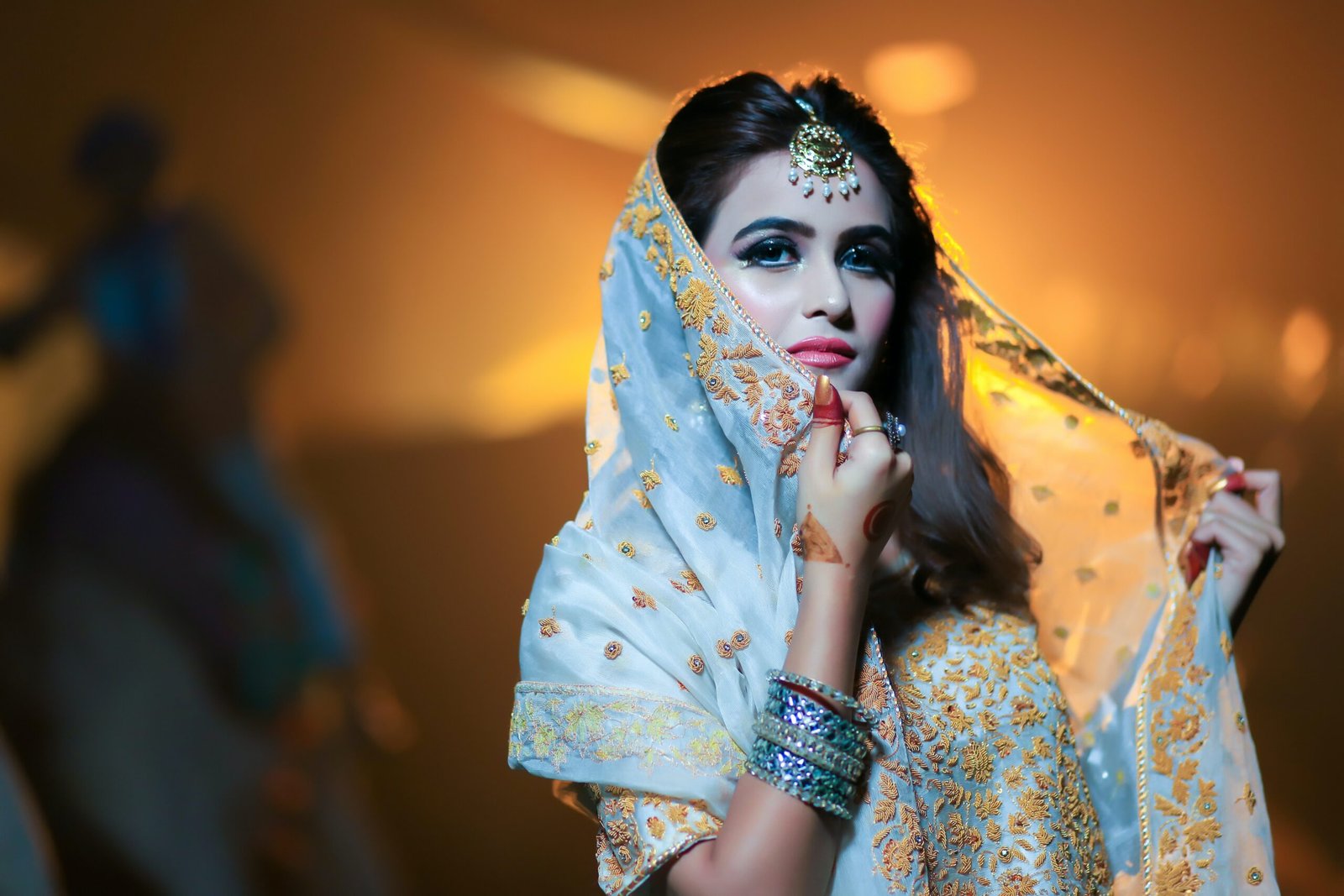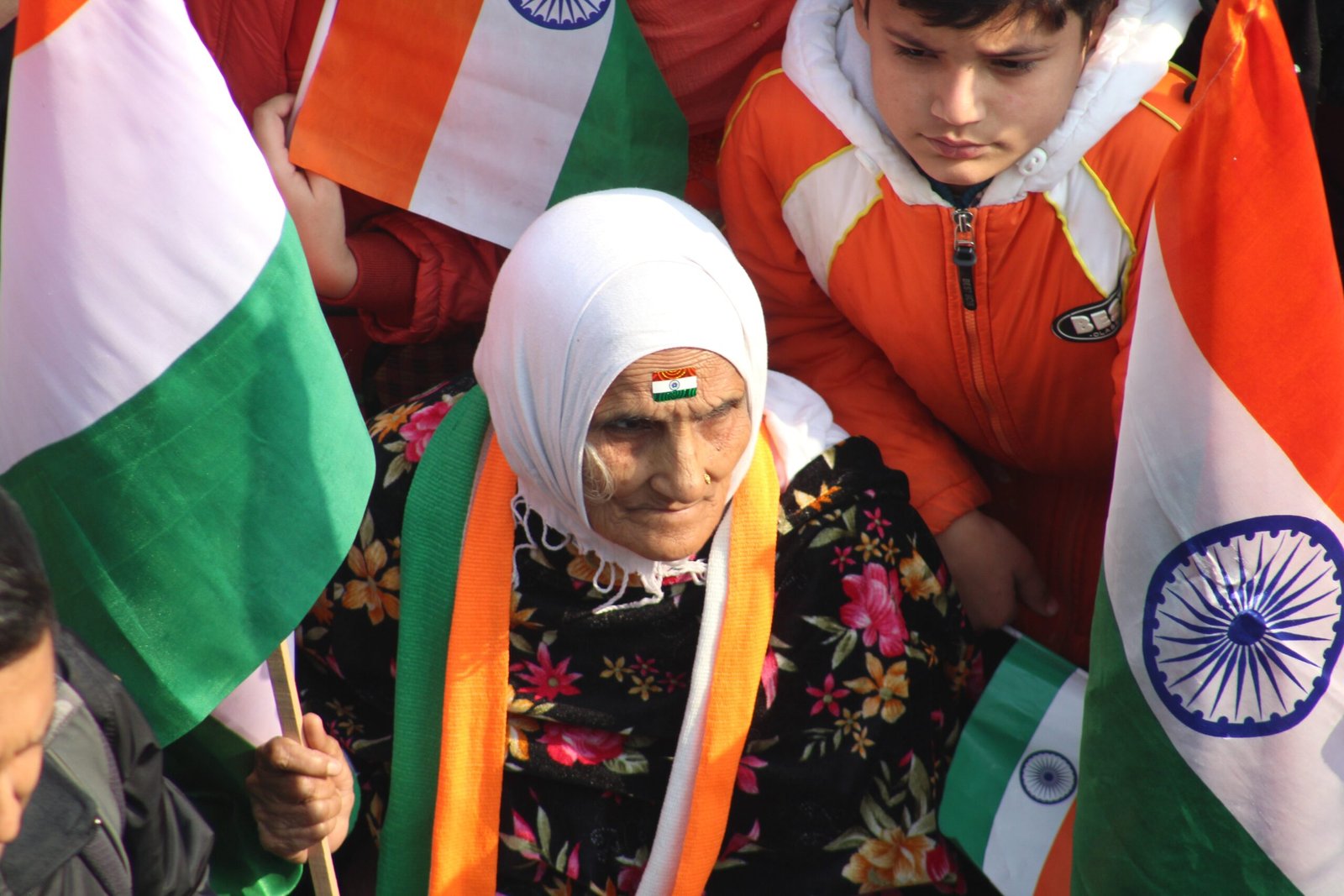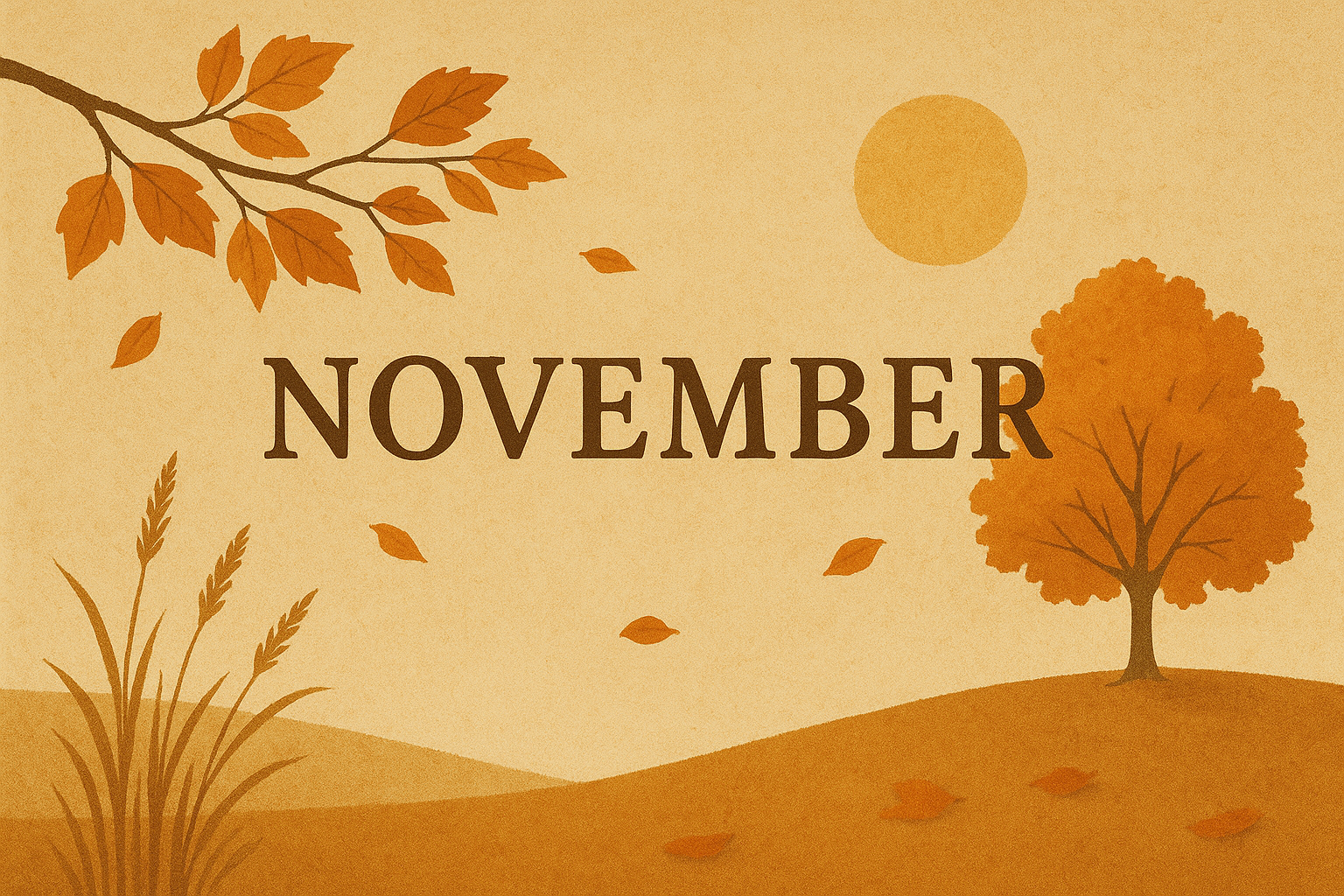“Jago Durga, Jago Dashapraharanadharini” – wake up, Mother Durga, wake up, O wielder of ten weapons.
Durga Pujo – a triumph of good over evil – is more than a festival for Bengalis – it in an emotion. All around the year, the Bengalis wait for this time of the year, where they can celebrate these four days of the festival with utmost fervor.
This festival also marks the homecoming for Goddess Durga and her children—Lakshmi, Saraswati, Ganesha, and Kartik—with elaborate rituals, feasting, family visits, and cultural performances.
There are few key ingredients of Durga Pujo; without them the festivities would be bland.
Dhak and Kash Ful
How does one know that puja is knocking at the door? The clear blue skies with milky white tufts of clouds floating and fields covered with Kash Ful (Kans grass or wild sugarcane). The whiteness of the vast expanse of this growth hypnotizes the minds and marks the ushering in of the Durga Pujo season.
Another essential part of the celebration is dhak (a large musical drum). Dhak can be noted as the official “voice” of the festival. They are played by traditional drummers known as dhakis.
Every Bengali I am sure, feels ecstatic when they see the fields covered with kash ful. With bated breath they wait for the sound of dhak to usher in Durga Ma.
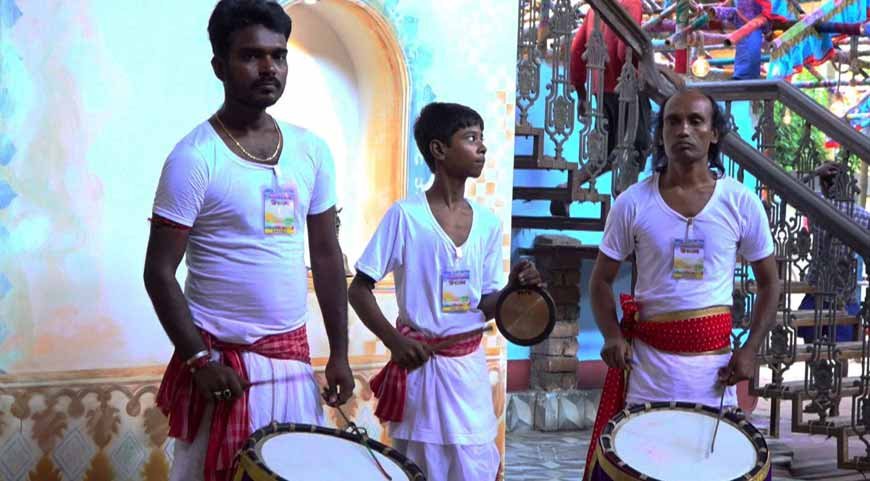
Dhunuchi Nach
Another important component of the festivity that needs special mention is a devotional dance performed during Durga Puja. This is considered as an expression of devotion to Goddess Durga – it is a dance form with a burning dhunuchi (earthen pot) choregraphed to the rhythms of the dhak.
Most pandals also organize competitions for this dance performance. It has to be performed in front of the Goddess as an act of ultimate surrender and faith to her.
The rhythm, steps, and the smell of the burning dhunuchi have a spellbinding effect on all devotees.

Pandal Hopping
No Durga Pujo is complete without the quintessential ritual of pandal hopping. Pandals are temporary structures built to house Ma Durga and her family – along with Mahisashur (the demon Ma Durga killed) – for the four days.
It is nothing less than a cultural extravaganza and a platform to showcase creativity for artists all across India and worldwide. The more innovative the pandals, the better! From traditional artwork pandals, to pandals built of coins, to eco-friendly recyclable materials, the list if endless. Moreover, some are built as replica of famous monuments – Ayodha Temple, Kashi Vishwanath Temple, to even Harry Potter’s Hogwart’s school.
Hopping from one pandal to another admiring the creativity, the lights, and the beautiful idols is a way of life for Bengalis.
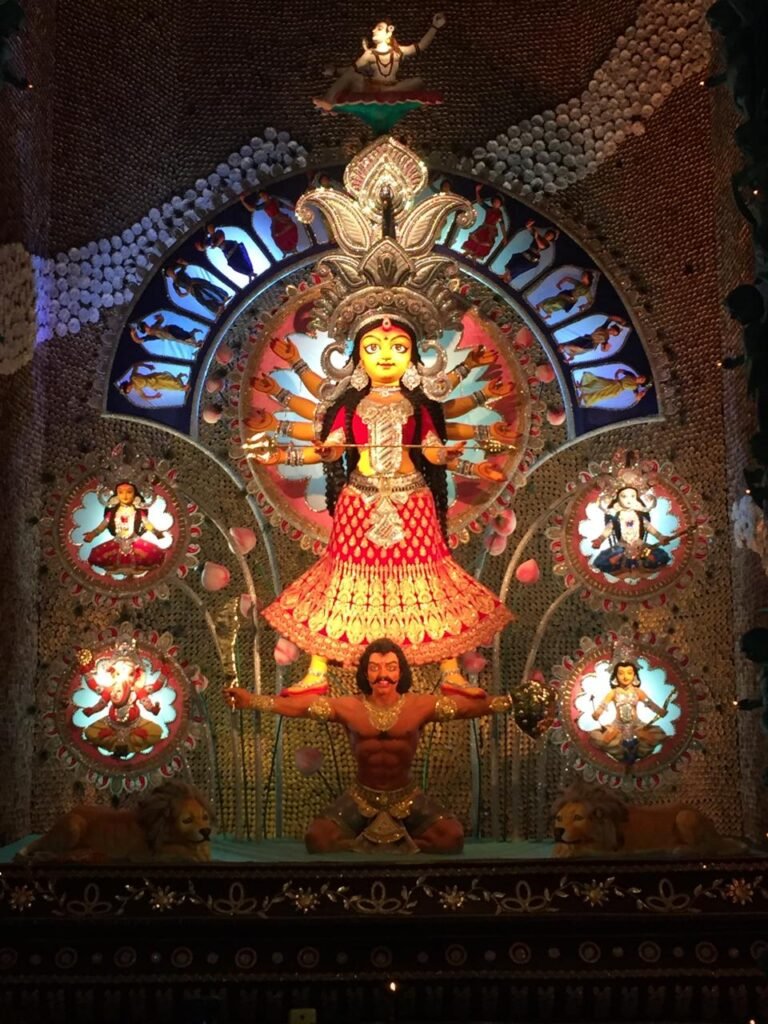
You can check a few of the most unique Kolkata Pandals here in this article
Food
No festivity is complete without food. Durga Pujo is specially marked by four days when Bengali women do not cook at all. The days are marked with
- Fruits and sweets after Anjali in the morning (divine offering to Durga Ma)
- Bhog (prasad) in the afternoon – mostly comprising Khichdi, Labra (mixed vegetable without onion and garlic), Chutni (sweet tomato condiment) and Payesh (sweet dish made of milk and rice)
- Gala dinner – from rolls to biryani to kebabs – the pandals are sprawling with food joints that make the pandal hoppers spoilt for choice
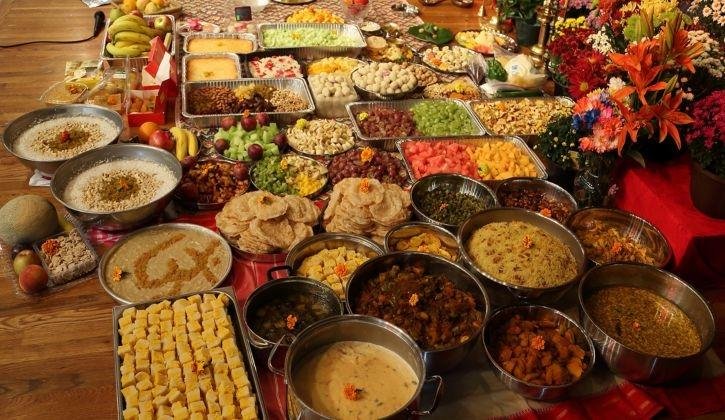
Cultural Extravaganza
Bengalis are considered to be a culturally rich community – the four days of the Puja is an embodiment to that fact. Each cultural association plans a myriad of cultural programs inside their Pandal premises to commemorate the essence of the festival.
The mornings are typically marked with competition of drawing, singing, dancing, quiz, etc. The evenings are marked with performances of special artists and music bands. This is enough to get everyone engaged till the wee hours of the night.
Sindoor Khela
Last, but not the least, the farewell of Ma Durga is marked by Sindoor Khela – where married women put vermillion on the Goddess and each other to celebrate womanhood and femininity.
This custom reinforces a sense of sisterhood and sharing of best wishes for family prosperity. As the sky becomes red with the color of the vermillion, the entire community knows that it is time to bid farewell to Ma Durga.
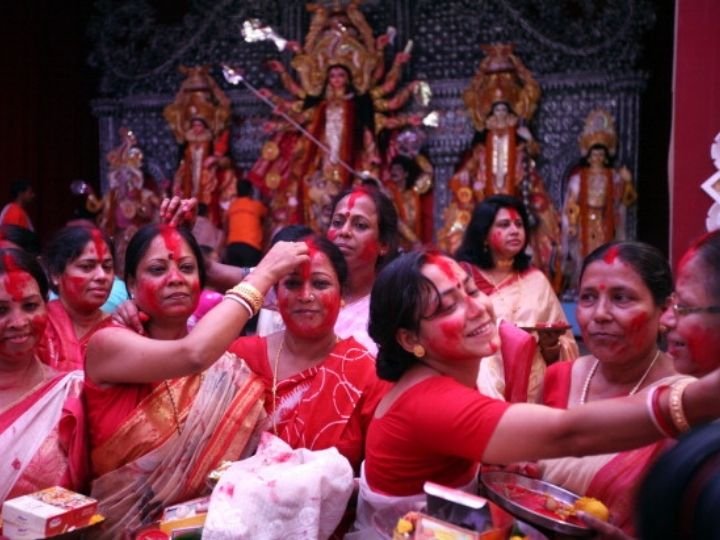
The four days are spent in a whirlwind, with the wait for another round of the Earth around the Sun.
“Bolo Durga Ma Ki, Joy” – Glory be to Mother Durga!

By Manjusha Dutta
Manjusha Dutta is a Senior Manager with a Software Insurance organization. A movie buff and an amateur dancer, she rocks in the videos that she creates for her YouTube channel. She can be reached at manjushadutta@gmail.com.





